Large-Scale Structure & Surveys Research Group (LSS) mainly engaged in Cosmology, Large-scale Surveys and their associated techniques research. LSS organized the scheme demonstration of the large-scale multiband imaging and slitless spectroscopy survey on board of the Chinese Manned Space Station and made an important contribution to the approval of the Space Station Optical Survey in the past several years. Currently, LSS carried out strategic plannings and survey simulations for Space Station Optical Survey, large astronomical focal plane CCD mechanical assembling, R&D of the low-noise focal plane electronics, large astronomical camera integration, assembling, testing and calibration.

Key Members
Dr. Hu ZHAN is the Leading Professor of LSS and the technical director of the Optical Survey Camera of National Astronomical Observatories, Chinese Academy of Sciences. Also he is the Co-Chair of the Large-Scale Structure Science Collaboration and its Cosmology Working Group of the Large Synoptic Survey Telescope (LSST). He received his Ph.D. from University of Arizona (2002). His research interests include cosmology, large-scale structure, wide-field survey sciences, dark matter, dark energy, cosmological simulations and R&D related to optical survey camera. (zhanhu@nao.cas.cn)

Current Research
(1)Optical Survey Simulations
A series of large-scale multiband imaging and slitless spectroscopy survey simulations were carried out using Hubble Ultra-Deep Field (HUDF) image and zCOSMOS for Space Station Optical Survey, and these results provided important support for the approval of the Space Station Optical Survey.
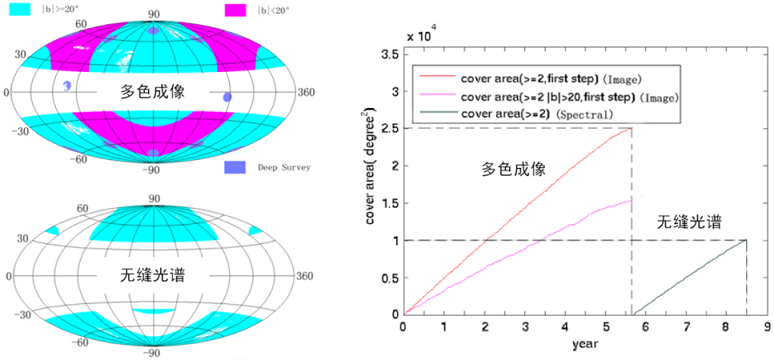
A strategy of the large-scale multiband imaging and slitless spectroscopy survey
(2)Selection of the Detector of the Optical Survey Cameras
The detectors’ imaging quality is a key issue to fulfill science objectives of the optical survey, especially non-uniform responsivity inside the pixel of the detector, which will affect the ellipticity of the galaxies. An experimental device is set up to test matrix CCD and CMOS detectors’ non-uniform responsivity inside the pixel. The detector selection will base on the experimental results.

Experimental device testing non-uniform responsivity inside the pixel of the detector

Ellipticity variations with CCD/CMOS moving along row/column direction
(3)Large astronomical focal planes CCD mechanical assembling
Large-scale optical survey cameras have a strict flatness requirement on the mechanical assembled focal plane, and the flatness of the mechanical assembled focal plane in conditions of deep cooling is one of important technical parameters for evaluating image quality. Some prototypes have been developed, such as a 4-CCD mosaic camera using LAMOST engineering CCDs, an 800mm800mm100mm non-contact flatness measuring system and a full size focal plane model of optical survey camera.
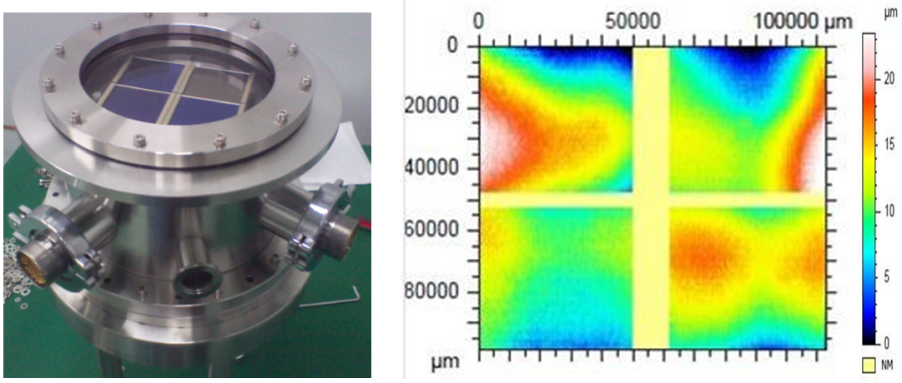
4-CCD prototype and its flatness measurement result
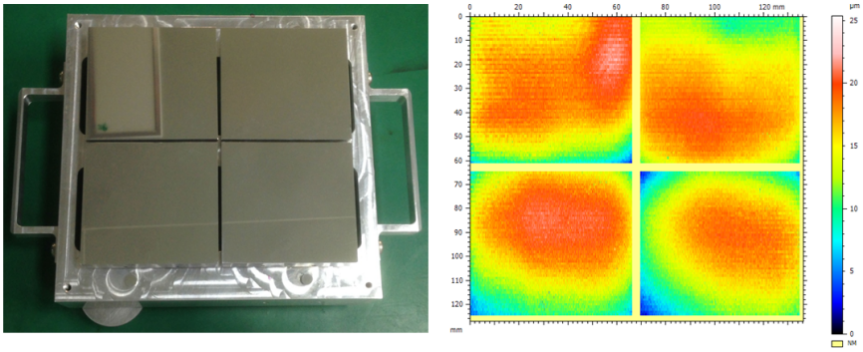
4-CCD Models and its flatness measurement result
Research conditions
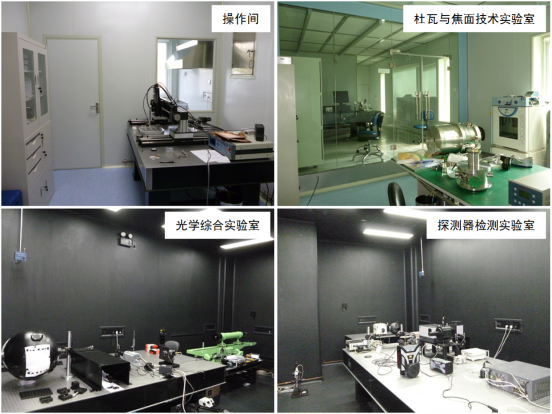
Laboratories(10000-class & 1000-class & 100-class clean rooms)

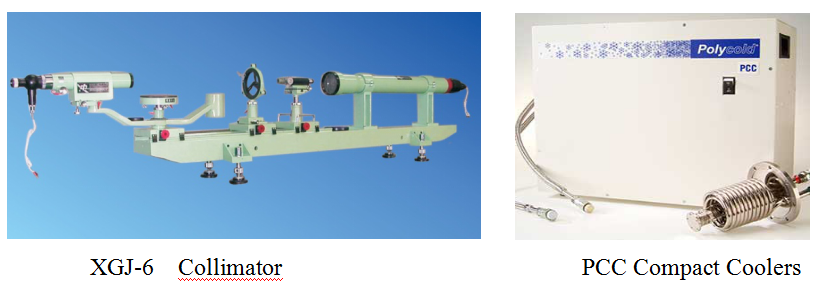


QMS2000 Gas Analysis System
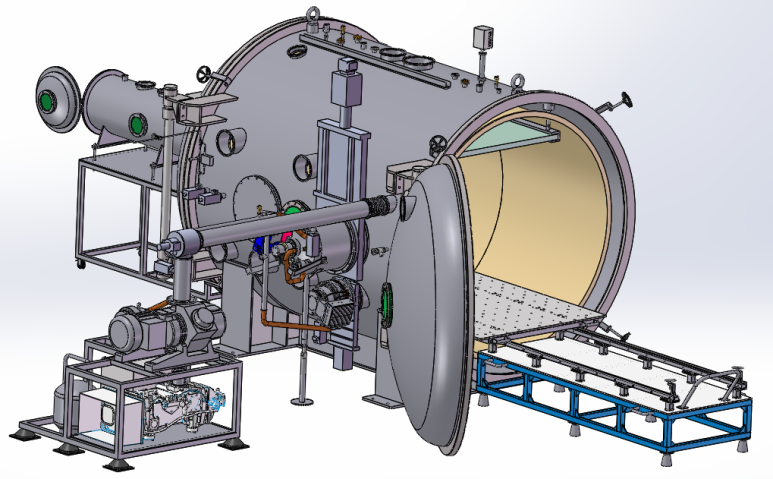
Multi-purpose Vacuum Testing Chamber (Under Construction)

Address: 20A Datun Road, Chaoyang District, Beijing, China code: 100012
Tel: 010-64888708 E-mail: naoc@nao.cas.cn

